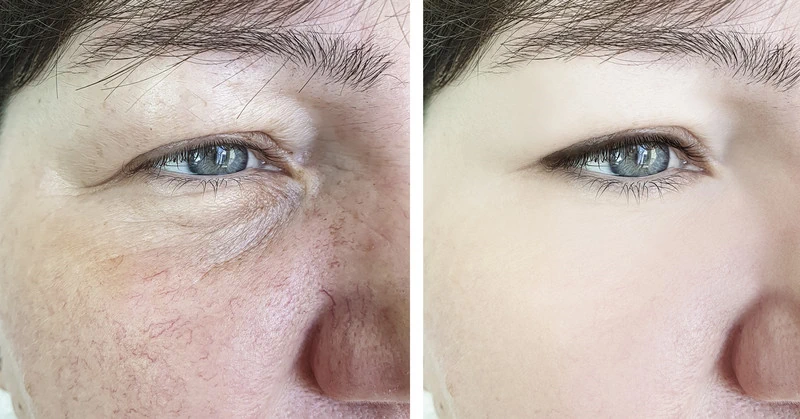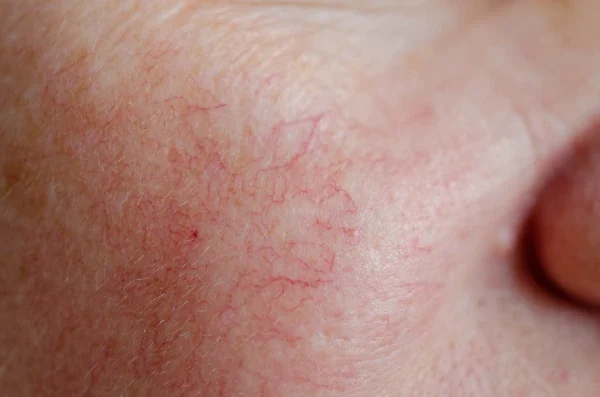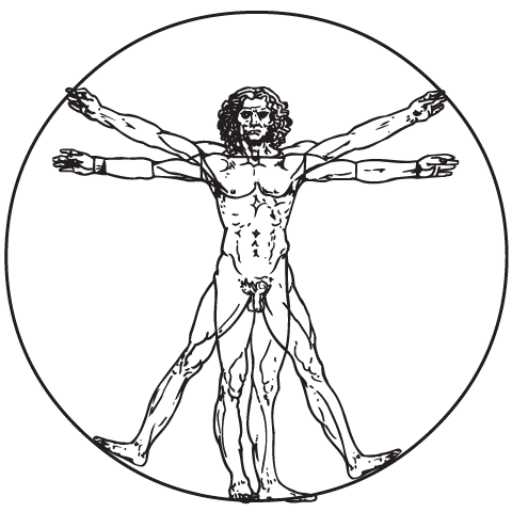Why do red veins appear on the face?
Red veins on the face, also known as Couperose or telangiectasia can have various causes. The most common reasons for these dilated capillaries are
- Genetic predispositionA familial tendency to weak or sensitive blood vessels can favour the development of couperose.
- AgeingWith increasing age, the skin loses elasticity and the blood vessels become more susceptible to damage.
- UV radiationExcessive sun exposure can weaken blood vessels and increase their visibility.
- Temperature fluctuationsFrequent changes between cold and heat can dilate the blood vessels and cause red veins on the face.
- AlcoholExcessive alcohol consumption dilates the blood vessels and can lead to permanent damage in the long term.
- Spicy foodA diet rich in hot spices or hot food can dilate the blood vessels and cause red veins.
- Skin diseases: Conditions such as rosacea can increase the risk of red veins forming. Couperose is a preliminary stage of rosacea.
- Hormonal changesPregnancy, Menopause or taking hormonal contraceptives can lead to dilation of the blood vessels.
- Stress and emotional pressureThese factors can lead to a temporary dilation of the blood vessels in the face.
- MedicationCertain medications, such as steroids, can make the skin thinner and the blood vessels more visible.
How can red veins on the face be treated?
Before choosing a treatment, it is advisable to seek advice from a experienced dermatologists to find the best and safest method for your individual skin type and condition. As already mentioned, there are different causes of red veins and there is no one-size-fits-all solution for these symptoms.
Some possible treatments for red veins on the face are
- Laser therapy: Laser treatments The IPL laser (Intense Pulsed Light) can target and destroy the red veins without damaging the surrounding tissue. This method is very effective and is frequently used in our practices.
- Sclerotherapy: Although they are more often used for Varicose veins sclerotherapy can also be used to treat red veins on the face. A solution is injected into the affected vessels, causing them to shrink.
- Topical treatmentsCreams and gels with ingredients such as retinoids, vitamin C or niacinamide can strengthen the skin and reduce the visibility of red veins. Special rosacea creams can also help.
- CryotherapyThe application of cold constricts the blood vessels, which can lead to a reduction in visibility. However, this method is less common and can be uncomfortable.
- MicroneedlingThis technique can stimulate collagen production in the skin and help to improve the appearance of the skin. Microneedling can be used in combination with other treatments, for example Microneedling with radiofrequency therapy.
- Chemical peelsMild chemical peels can renew the skin's surface and reduce the appearance of red veins.
Veins on your face? Be careful with home remedies!
Home remedies are not suitable to eliminate such skin damage, but usually worsen the course of the disease.
Rosacea often starts with red veins. Inflammation, pustules and swelling then appear.
The earlier skin diseases are diagnosed and treated by a specialist, the less the skin is damaged by them.
If, for example, the veins are not yet too pronounced, the treatment can be carried out using medical flash lamps or LEDs.
If the blood vessels are clearly visible, heat devices and lasers are used. In addition, special creams can soften the veins and cover them at the same time, as well as protecting the skin from the sun's rays. Heat (sauna), extreme cold, sun and alcohol consumption, as well as oily creams containing alcohol, have a counterproductive effect and should therefore be avoided.

Frequently asked questions:
What causes red veins on the face?
The most common causes, including genetic factors, are ageing, sun exposure, temperature fluctuations, alcohol and skin conditions such as rosacea. A visit to the dermatologist can provide clarity.
How can I prevent red veins on my face?
Prevention strategies such as using sun protection, avoiding extreme temperatures, a healthy diet and skincare regime and avoiding alcohol and smoking. However, you should be careful with 'home remedies', as these can worsen the situation without the support of a dermatologist.
Which treatments are most effective against red veins?
There are various treatment methods, including laser therapy, sclerotherapy, topical treatments, electrocoagulation and chemical peels. A dermatologist can clarify which treatment is best suited to you.
Are red veins on the face a sign of a serious illness?
Not always, but red veins are often a precursor to rosacea or other vascular diseases.
Can red veins on the face be permanently removed?
Permanent removal of red veins is not always possible, e.g. in the case of rosacea. However, the symptoms can be treated well. The success depends on the cause or the clinical picture.


